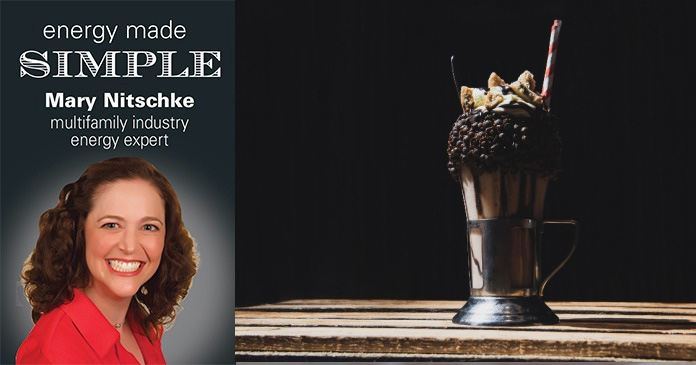As a child, I loved it when my grandmother would pick my brother and me up for an afternoon playdate. It was the best. My grandmother was indescribably beautiful, exuded love, spread laughter and played in our imaginary worlds. She had all this fantastic vintage costume jewelry, an antique typewriter and 1960’s dresses that I had full access to. I would clip those giant earrings on, swim in those A-line dresses barefoot with a pair of rhinestone-rimmed plastic eyeglasses (with no lenses) and clack on that typewriter pretending I was a fancy “newspaper writer” working on a story that would save the world.
Those afternoons were delightful. AND, like all fabulous grandparents, my grandmother was not averse to loading my brother and me with copious amounts of sugar before bringing us back to our parents’ house. Indeed, the capstone of a wonderful day was always stopping at a hamburger joint for burgers, unlimited French fries and build your own milkshakes. I always had a chocolate milkshake with candy bar bits blended in it. None of the candy bits could be sucked through the straw; they had to be shoveled out with a spoon from the bottom of the glass.
This is where I learned something particularly important and true which I apply professionally today: the good stuff is at the bottom. When reviewing contracts, I home in on the fine print, footnotes, disclosures, and the exclusions. Although not as appealing as candy bar bits, they make for important reading. I recommend close study when you are evaluating an energy contract. For compliance with a building performance standard (BPS) requirement in a local market, an investor objective for their resiliency strategy, or simply because the ROI of solar power is really promising for the NOI of the property, it is important to read the fine print. My dear friend Chris Laughman pointed out on a webcast recently that sometimes in the fine print of a renewable energy agreement, even though your building is being used to generate renewable energy, the solar renewable energy credits (SREC) may not belong to you. So smart to check!
If your gut reaction to this observation is to avoid renewable energy because you now think the contracts are shady, then I would suggest you have misunderstood my milkshake lesson. It is not only milkshakes with candy bar pieces where the good stuff is at the bottom, it is ALL milkshakes. I have seen tricky terms slipped into everything from cable agreements to trash hauler contracts. Solar contracts are just one type of many where caution is warranted.
There are so many benefits to solar power: resiliency of the asset, less risk due to uncertainty in the energy markets, compliance with regulations and with investor demands. This is not to mention emerging and existing solar power incentives to make the ROI more appealing. I would absolutely recommend evaluating solar as a solution; just make sure you do not miss the good stuff at the bottom.















